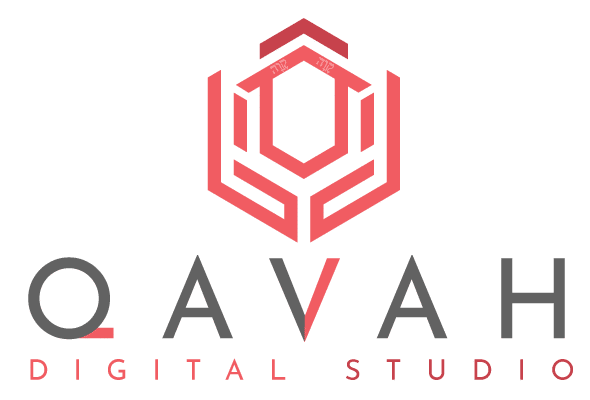In the world of SEO (Search Engine Optimization), the term “crawling” refers to the process by which search engines discover and index content across the web. Crawling is a critical step that determines how well a website ranks in search engine results. Without crawling, search engines would not be able to discover, evaluate, or index web pages, which means users wouldn’t find relevant information when they search for queries online. In this article, we will dive deep into the concept of crawling, how it works, and its importance for SEO.
What is Crawling?
Crawling is the process where search engine bots, often referred to as “spiders” or “crawlers,” systematically explore and read the content of websites. Search engines like Google, Bing, and Yahoo use these bots to navigate through websites and discover new content. The bots follow hyperlinks from one page to another, continuously scanning, reading, and indexing content they encounter.
The primary goal of crawling is to discover URLs and content that can then be indexed and included in the search engine’s database. Once a page is crawled and indexed, it becomes eligible to appear in search engine results pages (SERPs) when users perform relevant searches.
How does crawling work?
Crawlers, or bots, start their journey by accessing a list of known URLs, also called the crawl queue. This list can include new sites or recently updated pages that have been submitted to search engines or discovered through other links. From there, crawlers follow links from those pages to discover additional URLs.
Here’s a breakdown of the crawling process:
1. Discovery of URLs: Crawlers find web pages either by following links from other websites or by reading submitted sitemaps. A sitemap is a file that lists all the important pages of a website.
2. Crawling via Links: Once a bot lands on a web page, it reads the content and follows all internal and external links it finds to explore other pages.
3. Fetching and Processing Content: The bot retrieves the content of the page and processes it. This includes text, images, and metadata such as title tags and meta descriptions.
4. Indexing: After crawling the page, the search engine decides whether to index the content. Indexing makes a page eligible to appear in the search results.
The efficiency of crawling depends on factors like the website’s structure, the frequency of content updates, and the availability of resources to the crawlers.
You may also be interested in: how do subdomains affect seo?
Importance of crawling for SEO
Crawling is the foundation upon which SEO efforts are built. If a page is not crawled by search engines, it will not be indexed, which means it won’t appear in search results, regardless of its quality or relevance. Here’s why crawling is crucial for SEO:
1. Ensures visibility: Crawling is necessary for a page to be visible in SERPs. If search engines cannot find a page through crawling, it will not rank.
2. Improves rankings: Crawling helps search engines understand the structure and relevance of a website’s content. A well-optimized website that is easy to crawl is more likely to perform better in search rankings.
3. Helps identify errors: Crawling can help detect errors such as broken links, server errors, or duplicate content, which can negatively impact SEO. Regular crawling ensures that these issues are flagged and can be corrected.
4. Content freshness: Search engines prioritize fresh content. Frequent crawling ensures that newly added or updated content is indexed quickly, keeping your website relevant in search results.
How to optimize your website for crawling
To ensure that search engines can crawl your website effectively, certain technical and structural elements need to be optimized. Here are some best practices to help enhance your site’s crawlability:
1. Create a sitemap: A sitemap is a file that lists all the important pages on your website. Submitting a sitemap to search engines ensures they know about all the pages you want to be crawled and indexed.
2. Use internal linking: Internal links are hyperlinks that point to other pages on your website. A good internal linking structure helps crawlers easily discover all the pages on your site.
3. Avoid duplicate content: Duplicate content can confuse crawlers, making it harder for them to decide which version to index. Use canonical tags to specify which version of a page should be indexed.
4. Optimize for mobile: With Google’s mobile-first indexing, ensuring that your site is mobile-friendly is crucial. A responsive website design helps crawlers understand and rank your content appropriately.
5. Check crawl errors: Use tools like Google Search Console to identify and fix crawl errors, such as 404 errors or server issues, that prevent bots from accessing certain pages.
6. Limit URL parameters: Complex URLs with unnecessary parameters can confuse crawlers and lead to inefficient crawling. Use clean, user-friendly URLs to improve crawlability.
7. Robots.txt File: This file tells search engines which pages to crawl and which to ignore. Make sure your robots.txt file is correctly configured to prevent blocking important pages.
8. Monitor crawl budget: Search engines allocate a specific crawl budget to each website, determining how many pages they will crawl in a given period. Avoid wasting this budget on low-priority pages, such as duplicate or thin content.

Common crawling issues
Despite your best efforts to optimize your site for crawling, issues can arise that may prevent crawlers from effectively accessing your content. Here are some common crawling problems:
- Broken links: If your site contains broken internal links, crawlers will hit a dead-end, preventing them from discovering additional pages. Regularly check for and fix broken links.
- Blocked pages: If pages are unintentionally blocked in the robots.txt file, they won’t be crawled or indexed.
- JavaScript issues: Pages that rely heavily on JavaScript can sometimes be difficult for crawlers to interpret. Make sure essential content is visible in HTML or use techniques like server-side rendering.
- Too many redirects: Having too many redirects can slow down crawlers and waste crawl budget. Minimize redirects and ensure they are used only when necessary.
- Slow page load speed: Crawlers prioritize faster websites. If your pages load too slowly, crawlers may abandon the crawl, leaving some pages undiscovered.
The role of crawl budget
Crawl budget refers to the number of pages a search engine will crawl on your site within a certain timeframe. For larger websites with thousands of pages, managing the crawl budget becomes essential. Here’s how to optimize your crawl budget:
- Prioritize high-quality pages: Ensure that your most important pages, such as core product or service pages, are easily accessible for crawlers.
- Minimize duplicate content: Eliminate or consolidate duplicate pages to prevent crawl budget from being wasted on unnecessary content.
- Use pagination: For eCommerce or blog sites with multiple pages, use pagination correctly to help search engines efficiently crawl content-rich pages.
Crawling vs. Indexing
Crawling and indexing are two different but related processes. Crawling refers to the discovery of web pages, while indexing is the process of storing and organizing the information found on those pages. After a page is crawled, search engines evaluate whether the content is valuable enough to be included in the index. Only indexed pages are eligible to appear in search results.
It’s essential to optimize both processes: ensure your site is easy to crawl and provides high-quality, relevant content that search engines want to index.
Frequently Asked Questions (FAQ)
1. How often do search engines crawl a website?
The frequency of crawling depends on various factors, such as the size of the website, how often the content is updated, and the website’s authority. Larger and frequently updated websites are crawled more often, while smaller sites may be crawled less frequently. You can speed up the crawling process by regularly adding fresh content and submitting updated sitemaps to search engines.
2. How can I check if my website is being crawled?
You can use tools like Google Search Console to monitor crawling activity. In the “Crawl Stats” section, you’ll see data about how often Googlebot crawls your site and which pages it has accessed. Additionally, crawling errors and issues will be flagged in this tool, allowing you to fix any problems.
3. What happens if a page is not crawled?
If a page is not crawled, it cannot be indexed, and if it’s not indexed, it won’t appear in search engine results. This is why optimizing your site for crawling is crucial. Ensure that important pages are accessible through internal links, included in sitemaps, and not blocked by your robots.txt file.
4. What is a crawl budget, and why is it important?
A crawl budget is the number of pages search engines will crawl on your website in a given period. It’s important to manage your crawl budget effectively, especially on large websites, to ensure that search engines prioritize crawling your most important content. Wasting crawl budget on duplicate or low-value pages can negatively impact SEO performance.
5. How can I improve the crawlability of my website?
To improve crawlability, ensure your website has a clean structure, create an XML sitemap, use internal links effectively, fix broken links, and avoid blocking important pages in the robots.txt file. Regularly monitor your site’s crawl performance through tools like Google Search Console and address any issues as they arise.
6. Does crawling affect page ranking directly?
Crawling itself does not directly affect page ranking, but it is a crucial step in the process. If search engines don’t crawl and index your pages, they won’t rank at all. Effective crawling leads to better visibility and indexing, which can improve rankings in the long run.








